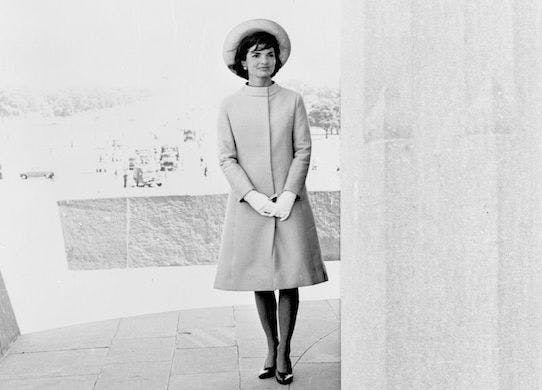Let’s Start With the Name: Jacqueline Bouvier Kennedy Onassis
By resisting the temptation to say too much, Oline Eaton delivers a serious and entertaining exploration of a person and the persona constructed by the subject herself and the media.

‘Finding Jackie: A Life Reinvented’
By Oline Eaton
Diversion Books, 320 pages
The good news, as Oline Eaton demonstrates, is that we are still trying to find Jackie. This biography resists the temptation to say too much, and thus we get a serious and entertaining exploration of a person and the persona constructed by the subject herself and the media.
Jacqueline Bouvier Kennedy Onassis: The name itself is a fine place to start. Early on, she was deeply attached to her father, the louche, sexy Black Jack Bouvier. Looking like Clark Gable, he seemed to prepare her for the dashing and unfaithful John F. Kennedy. Powerful men attracted young Jackie.
Although she had no particular interest in politics, she knew what she was about when she listened to her husband listening to a recording of a Broadway musical, “Camelot.” She told journalist Theodore H. White she did not want people to forget her husband, or that: “For one brief shining moment there was Camelot.” All that vanished with his assassination, never to return again.
Wait a minute, though. Lots of wives listened to records with their husbands, so what made Jackie special to a nation of wives and young women, most of whom did not read about King Arthur? Well, it turns out that like Jackie, they read movie magazines and tabloids and had a lot invested in the myth of the martyred president and his young, glamorous wife as keeper of the flame.
What a shock, then, to the nation’s mythological life when Jackie married Aristotle Onassis, an older and unhandsome man, a Greek shipping tycoon, who absconded with her on his yacht. She wasn’t supposed to flaunt a life of luxury and live abroad on a Greek island, many thought.
Yet Jackie, hounded by the press and especially by photographers, wearied of public life, and saw in Onassis a respite and refuge. This courtly man, renowned for his affair with Maria Callas, treated Jackie quite well — at least to begin with.
The marriage lasted until his death, but seemed in constant jeopardy because Jackie did not act like a submissive Greek wife. It turned out that however much she admired and gravitated toward commanding men, she had a mind of her own and expressed it, to his displeasure.
No woman is an island, Jackie realized, and her frequent trips back to the States to be with her children created marital tension. She was enormously grateful to Onassis, but he became difficult as he aged, grieved over his son’s death in a plane crash, and fretted that he could no longer make the big business deals. Jackie — at least outwardly — got lost in this period.
She emerged as a woman on her own only after her second husband’s death, when she decided to return to Manhattan to take a job as a book editor, surprising the mythologists of her life who expected her to marry yet again.
This phase of Jackie’s life receives cursory treatment in Ms. Eaton’s fast-paced and astute story. Based on her own narrative, however, and my experience concerning Jackie, this last phase of her life reads to me, anyway, as a recovery of her youthful self.
The young Jackie had been a journalist and relished hunting down stories. She suggested to my agent that I ought to write about Martha Gellhorn, the intrepid war correspondent and the only wife to walk out on Ernest Hemingway. Jackie knew full well that Gellhorn, who had ties to the Kennedy administration, wanted no biography, but as an editor she also knew what good copy Gellhorn would make.
As much as Jackie had deplored photographers like Ron Gallella, who seemed to cling to her every move, the life of the famous and high achievers proved irresistible to her.
Gellhorn was no one-off. Jackie then enthusiastically accepted the proposal for a biography of Eudora Welty by a friend of mine, the late Ann Waldron, even though Welty and her circle were vehemently opposed to it.
Ms. Eaton does not try to reconcile the contradictions of a Jackie who wanted her privacy but also made sure she looked good in photographs, and wanted to know what was the latest about Elizabeth Taylor. It has been said that stars like to meet other stars. Perhaps that is one way to know that they really are part of the firmament.
Mr. Rollyson is the author of “Nothing Ever Happens to the Brave: The Story of Martha Gellhorn” and “Confessions of a Serial Biographer.”

